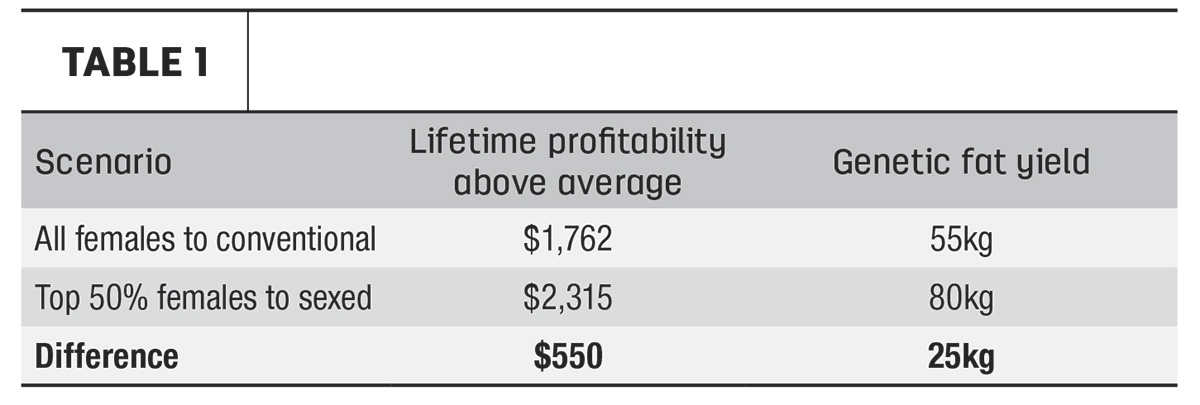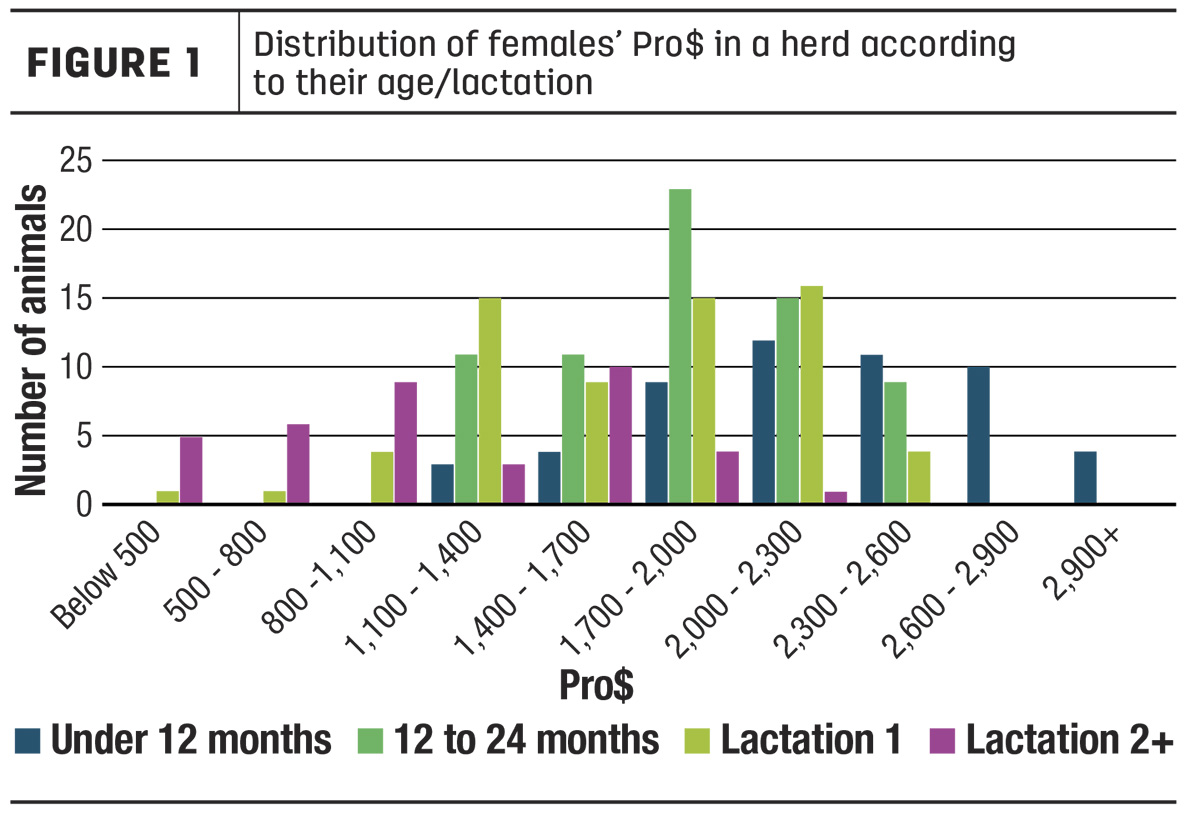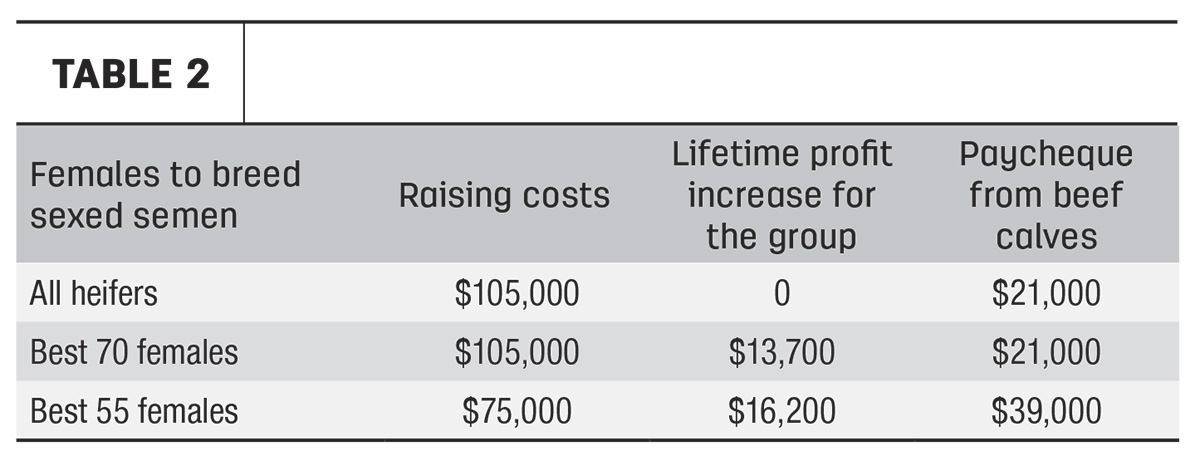To read this article in French, click here.
In recent times, the use of beef semen by dairy herds has gained traction. Previously, breeding beef-on-dairy was typically used to generate additional income from a few crossbred calves or as a final recourse for cows with problems becoming pregnant. However, due to the growing availability and fertility of sexed semen, the higher cost of heifer raising, along with other shifting dynamics of the dairy and beef industries, beef-on-dairy has become a prevalent practice across North America. More and more producers have started using it for a strategic genetic approach and inventory control. The extra cash flow from selling the calves is a plus as well.
Current trends
It is known that A.I. companies have had beef bulls as their top sales over the last few years. Here are a few statistics:
- Less than 5% of the inseminations were beef-on-dairy before 2012; in 2017, it was over 12%. This number has doubled since then, and now 1 in every 4 inseminations of dairy animals is using beef semen.
- About 9 out of 10 herds are using beef semen, commonly varying between 10% to 70% of the inseminations.
- Most herds started using beef-on-dairy in the last five years.
- The majority of the breedings are to Angus, mostly due to fertility, ease of calving, market acceptance for the crossbred calves and the price of semen (about 50% to 60% cheaper, on average).
- The price for a crossbred calf ranges from $150 to $600, depending on the quality of the calf and the region.
Planning to boost your genetic gain with beef semen
Yes, you are still reading Progressive Dairy, and not Progressive Cattle. In fact, you can improve your dairy herd by strategically using beef semen, and that is the focus here. The central point is around the planning aspect. Once you breed a female to beef, you made the commitment to not have her daughter in the dairy herd, unlike using conventional semen. In the case of conventional semen, you would be flipping a coin to decide if you are going to have an offspring from that breeding.
Here, it is relevant to bring up the essential questions to build a genetic strategy around:
- Do you want this female in your milking herd?
- How many offspring do you want from this female in the future?
- Which bull is the best mating for this female?
With limited herd growth and virtually no value for dairy male calves, it is advantageous to use beef instead of conventional semen. In the end, you make the decision about your future herd before the moment you breed a female. This is where the value is: You are picking the dams for your future milking cows. It is key to select the best ones available to make sure you have the calves with the highest odds of becoming great cows.
Using sexed and not conventional semen
Randomly selecting the dams of your heifers is not the greatest strategy, obviously. The more selective you are when picking the females, the higher the gain achieved. Using the information from a 100-cow herd to illustrate, the number of replacement heifers needed every year is between 40 to 50, on average. If this herd had another 100 youngstock, using just conventional semen would generate more heifers than needed (about 80), while another 80 dairy males would leave the farm. Table 1 compares the offspring from breeding all females to conventional against breeding the "best half" of the animals with sexed semen. By just doing that, your calves will have the potential to produce 25 kilograms more fat per lactation while generating over $500 more profit – and they would cost you the same to be raised.

Breeding the best females to sexed semen
It is common to hear of herds using sexed semen on all heifers and beef semen on all lactating cows. This is a simple and decent start for selecting females, but still far from optimal. Looking at a real herd example in Figure 1, it is easy to visualize the missed opportunity. Many of the first-lactation cows (green bars) and some of the second-or-greater-lactation cows (purple bars) have higher genetic potential than many youngstock (teal and blue bars).

In this herd’s case, 70 heifers are between 3 and 15 months old; if you were to pick the females with the highest genetic potential disregarding age, we are talking about $200 more lifetime profit potential for each calf. Once again, they would cost the same to be raised.
Planning strategically
In the example above, we were not as detailed regarding the number of heifers to be generated. For a 100-cow herd, between 40 to 50 females born per year would guarantee enough replacements with a good margin of safety. That means you could be even more selective by picking the best 55 dams, resulting in an additional $70 in lifetime profit per calf born, on average. Table 2 shows the yearly raising costs and cash flow from selling crossbred beef calves, as well as the potential genetic gain in lifetime profit (how much more profit the group of calves could generate during their lives).

Bottom line
Beef-on-dairy has become more popular because it does make sense in the current industry reality. It has clear short-term benefits such as higher cash flow from calf sales, but there are more benefits in the long run. Being strategic and planning each breeding is key for any herd to keep improving your milking herd over the years. Consistently monitoring the number of heifers to generate will drastically reduce your total raising costs, but picking the best females will actually guarantee that the investment has the highest return two to six years from now. In the end, it will cost you the same to raise two heifers, but anyone would choose to raise the animals with the higher probability of making you a significant profit.










